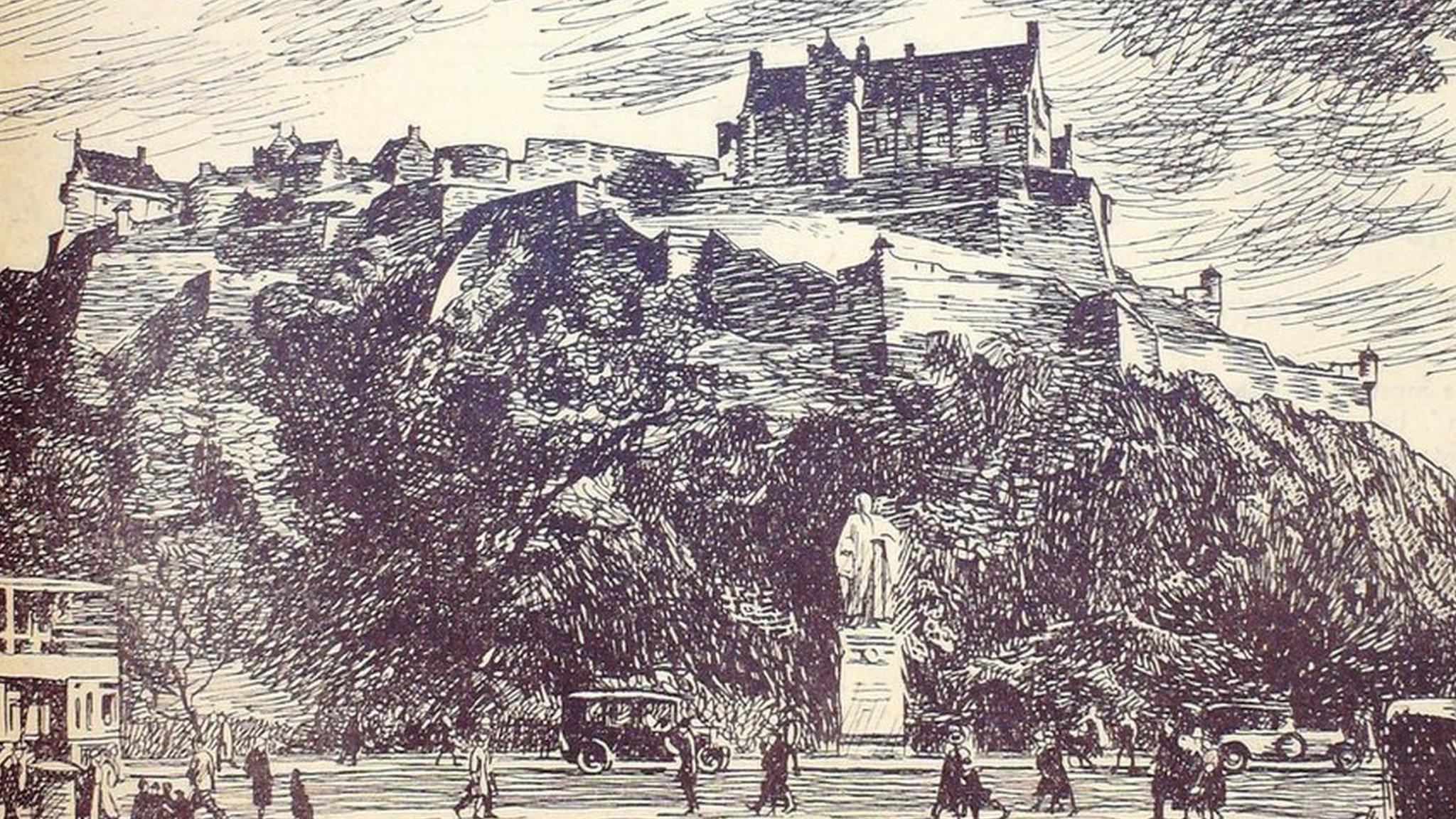The People's Friend: 150 years without upsetting or offending
- Published
The People's Friend was first published in 1869
When the People's Friend was first published 150 years ago it vowed it would contain nothing with the "slightest tendency to corrupt the morals either of old or young".
According to editor-in-chief Angela Gilchrist, the longest-running women's magazine in the world is still sticking to those founding values.
"There should be nothing to upset or offend," she says.
"The Friend is all about entertainment so people feel better for reading it, not saddened, upset or frightened in any way."

The anniversary edition features a drawing of Dundee, the city where the magazine started and is still based

The People's Friend, which was launched in Dundee on 13 January 1869, was intended for "fireside reading".
Half the magazine was devoted to fiction, "with preference given to Scotch stories".
The rest dealt with practical matters such as domestic household advice.

The first edition of the People's Friend to feature a drawing of a Scottish landmark was in 1946

Charlotte Lauder, who is doing a PhD looking at popular Scottish magazines of the late 19th and early 20th Century, says The Friend has always been morally upright but it was originally more "radical" than it is today.
It was founded by John Leng, a newspaper proprietor and later a Liberal politician, who encouraged literacy in the city of Dundee.
"It was a really important magazine for self-improvement and education," Ms Lauder says.
"It used its pages to encourage people to become political, they were a proponent of female suffrage and they were important in highlighting some of the problems in Dundee, such as injustices against factory workers in the Jute mills."

People's Friend - facts

The August 1947 edition showed Balmoral Castle and pictured the newly-engaged Princess Elizabeth and Prince Philip of Greece and Denmark

Its 150th anniversary issue is number 7,759.
In 1932, The People's Friend outsold all other women's weeklies in Scotland, with an estimated 1,520,000 readers or 24.1% of the population.
Today it sells about 170,000 copies a week
About 20,000 copies are exported to Australia, New Zealand, South Africa and Canada.
The People's Friend publishes about 600 short stories per year.
It still operates an open-submissions policy, meaning anyone can submit a story and all are read by the team.
Since illustrated covers were introduced in 1946, each one has been hand-drawn and signed "J. Campbell Kerr".
This is an alias for many talented artists across the years.
The first illustrated cover was Edinburgh Castle and the artworks tend to be of British landscapes, with almost 4,000 being created over the years.
There have only been nine editors during its 150 years.
1970 saw colour appear in the magazine for the first time.
The magazine once had a dedicated violin correspondent who reviewed readers' violins.
Annie S. Swan wrote for the magazine for 63 years.
It was originally sold for one penny. The cover price was not increased until 1918 (to 1½d).

Family entertainment
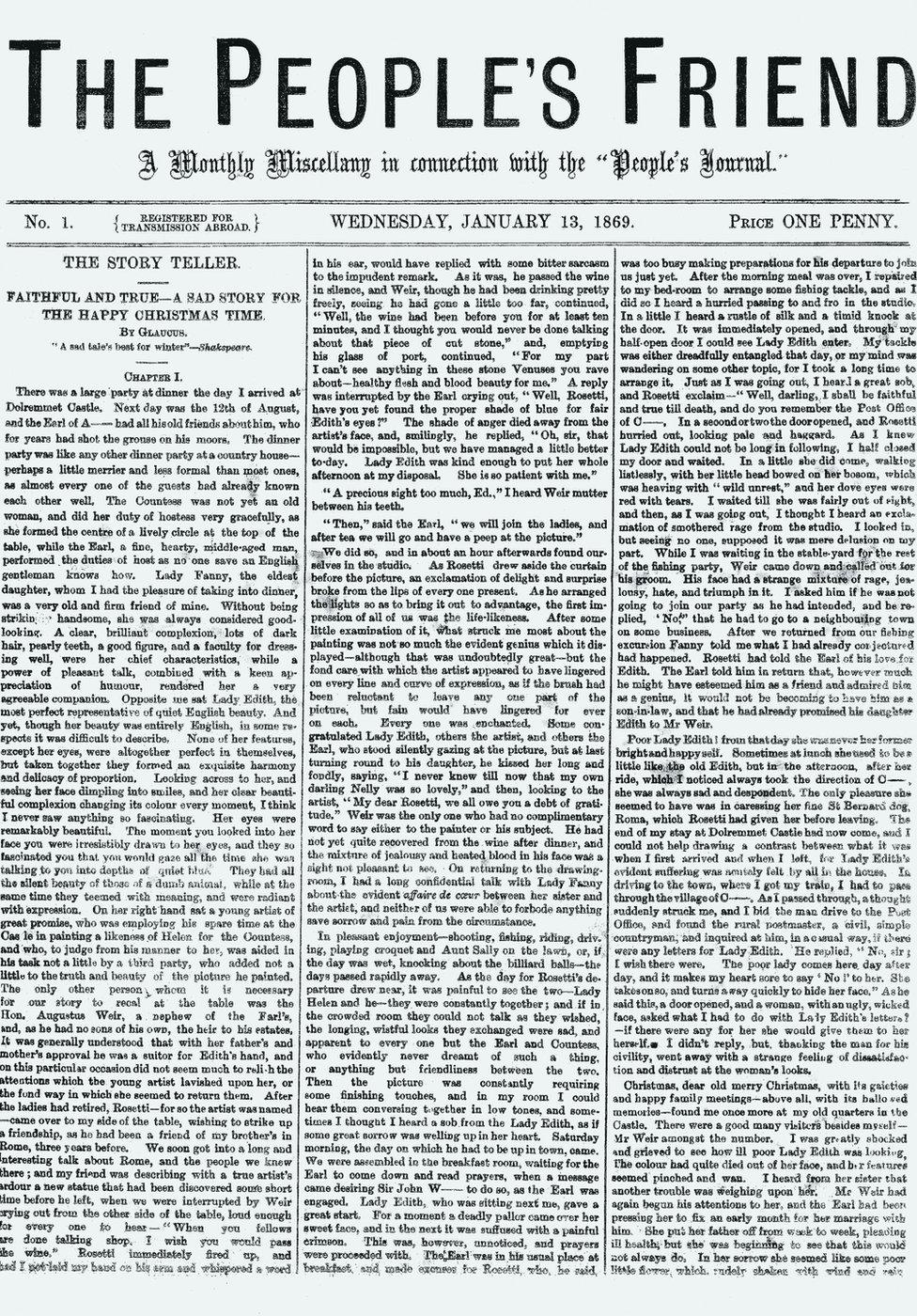

Mothers, wives and daughters
The People's Friend began as an offshoot of another popular publication - the People's Journal, which ceased production in 1986.
It was originally a "monthly miscellany" which was designed to be "especially a friend of the mothers, wives, daughters and bairns of Scotland".
Within a year, it was so popular that it went weekly.
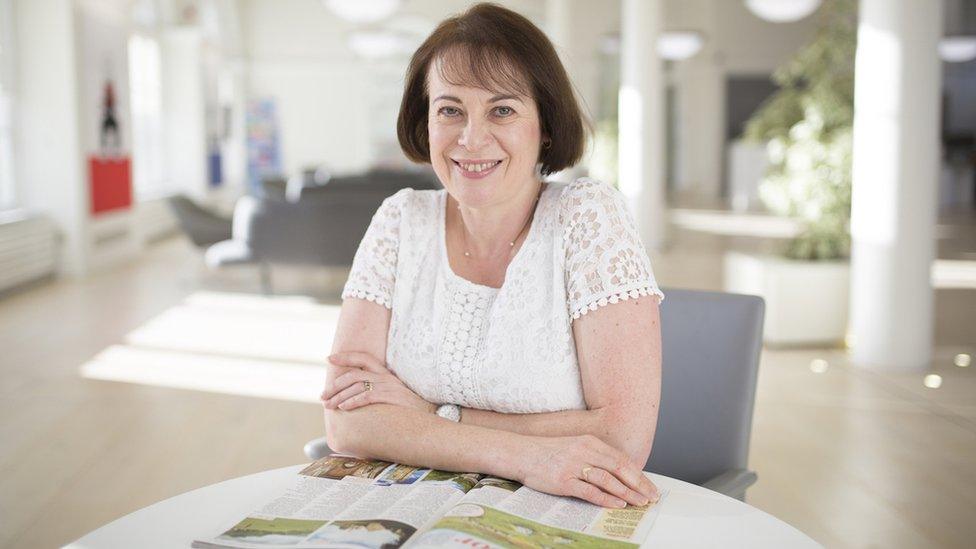
Editor-in-chief Angela Gilchrist said the People's Friend was true to its original values
Ms Gilchrist says: "Looking through the archives, you can see that when the Friend was published in 1869, it was very much designed as a publication for the whole family.
"There was something in it for everyone, there was a housewife column, scientific articles and stuff for children.
"You have to think back to those days - it was aiming at ordinary people, not wealthy, educated people."
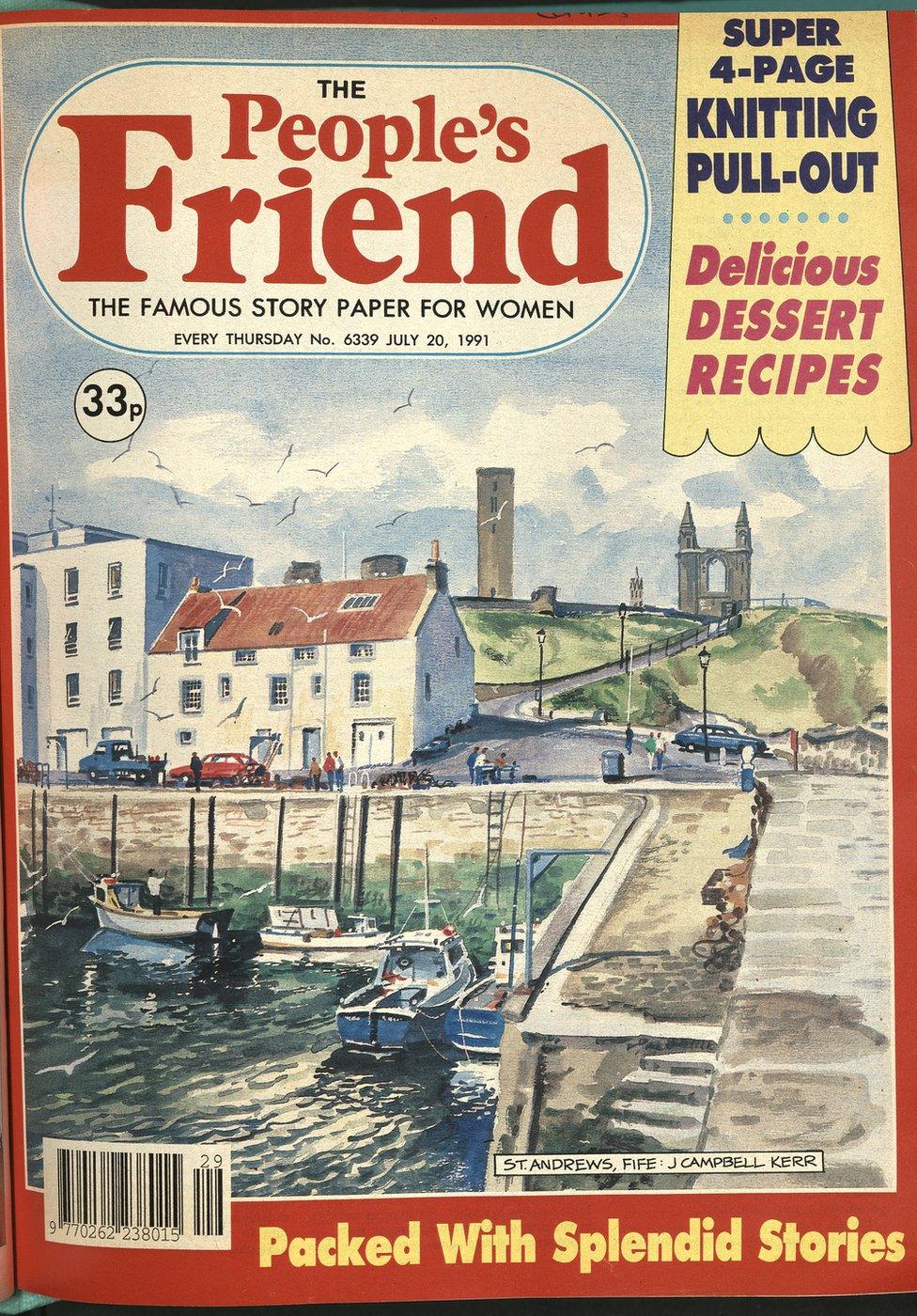
The cover images (here St Andrews in Fife) are always hand-drawn

According to Ms Lauder, who is researching at the University of Strathclyde and the National Library of Scotland, many of the stories in the early days were a "realist" depiction of the harsh conditions in Scotland at the time.
"Even though some stories take place in rural settings they are quite honest about the difficulties that Scots face and the harshness of life," she says.
DC Thomson, the current publishers of the magazine, took over The People's Friend at the turn of the 20th Century.
Ms Lauder says Thomson's, which was later responsible for the Beano and the Dandy comics, built on the magazine's success but changed its voice.
"It is more empowering in the early period," she says.
"Then I think once the fan-base is established among women the voice changes and we get more romantic and nostalgic stories that do have quite strong female voices in them but it is a different kind of magazine culture."
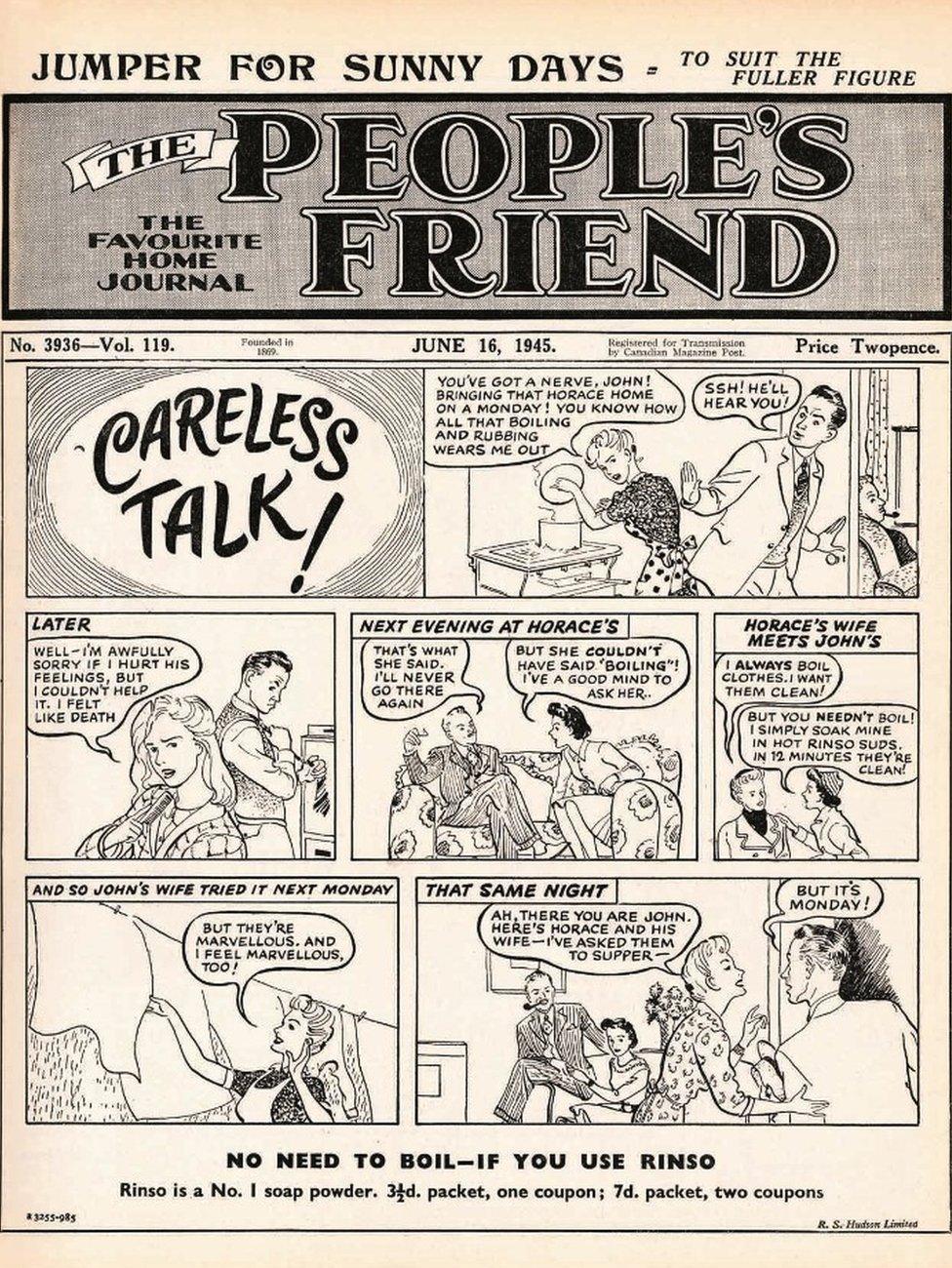

According to editor-in-chief Ms Gilchrist, the focus of the magazine shifted during WW1.
"The Friend's purpose changes to helping the women left behind," she says.
"There's advice for them how to adapt to what they suddenly found themselves doing - legal advice, advice on running the home, how to feed the family and how to enter the world of work that some of them were entering for the first time.
"During WW1 it really became about the women and I don't think we've ever lost that."
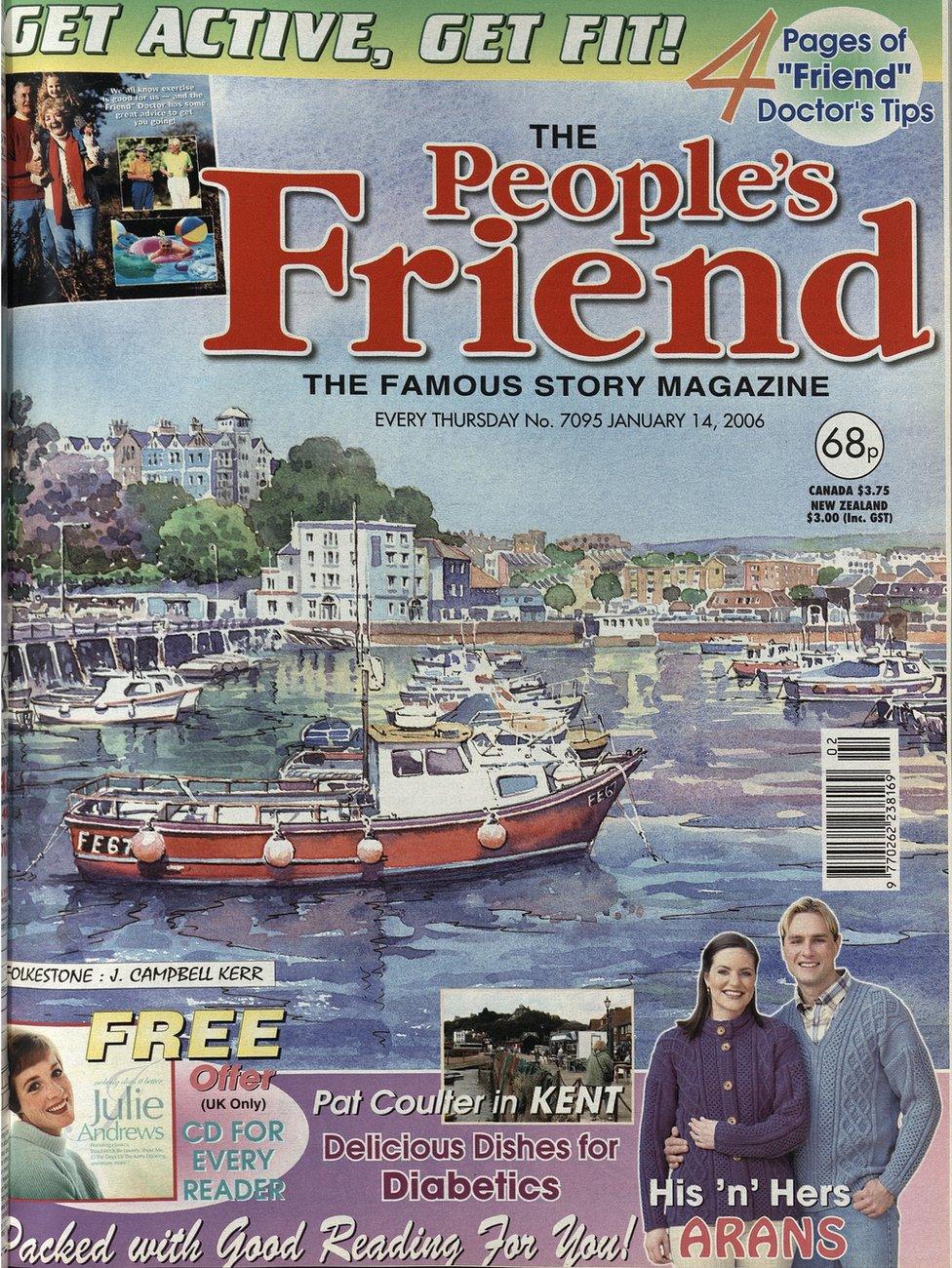
The cover drawings are often Scotland but can also be other places in the UK such as Folkestone in this image

In the fiction pages, one of the most popular serial writers of the late 19th and early 20th Century was Annie S. Swan.
Her stories were often disparagingly dubbed "Kailyard fiction", a reference to the parochialism and sentimentality of the writing.
One critic said her characters knew nothing higher in society than the minister and his wife and believed all the world lay in wickedness except Scotland.
Despite the criticism, she wrote for the Friend for many decades and her serials were collected into books which enjoyed great commercial success.
These days the People's Friend still sells about 170,000 copies a week and is read by even more people as it is widely shared and often found in doctors' waiting rooms.
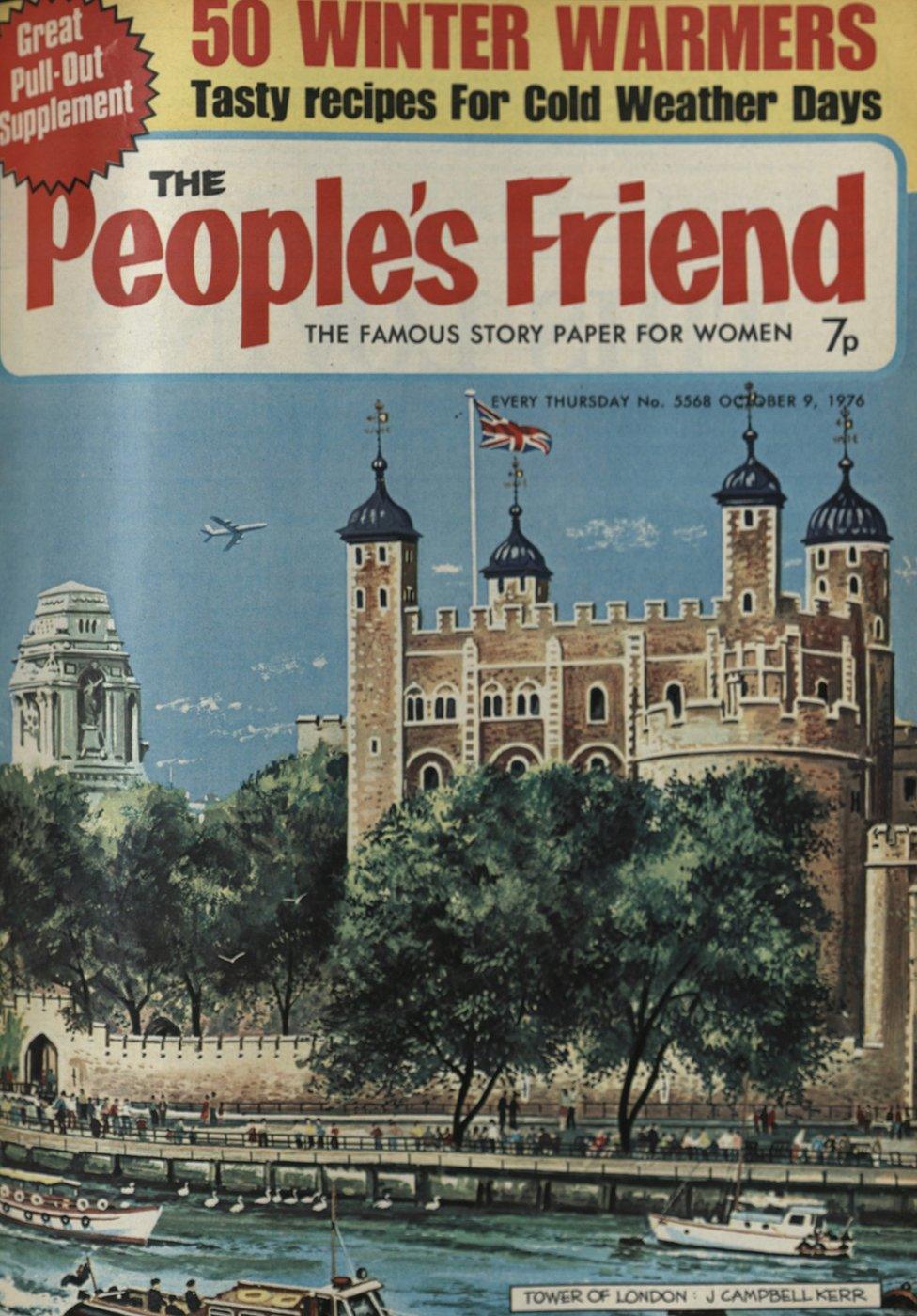

Ms Gilchrist says the 1970s and 80s saw the magazine's audience change again.
It became older, reflecting the fact that younger women were working full time, she says.
Its readership tends to be over 60 and female but the editor-in-chief says these readers are different to "old ladies" of previous generations.
"Some of them have really active lifestyles and they wouldn't describe themselves as old, so neither should we," she says.
"I think that regardless of how up to date you are with what's happening in the world around, there are moments when you just want to step back and have a bit of escapism and that's really what we offer.
"Reaching this milestone is amazing and is proof of the relationship we have with our readers.
"No other magazine can come close to this."
- Published13 January 2019
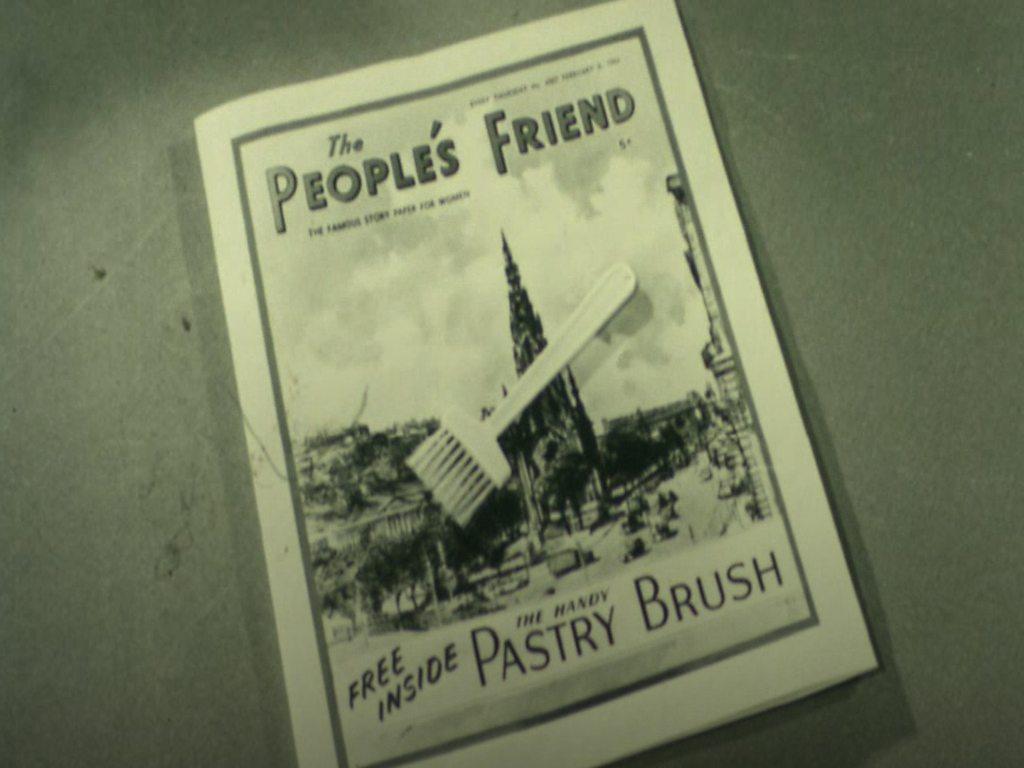
- Published2 January 2018
